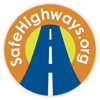Editor’s Note
Every transportation program, service, and initiative requires a measurement of performance to determine value and success. We must ask ourselves: Is this program delivering on its objectives? What metrics define success? Are there areas for improvement? What is the public perception of said program, service, or initiative? The answer to these questions will define and shape a program’s value and longevity.
As is discussed in this issue’s feature article, clear statistics and metrics exist for measuring the on-the-road response and performance of Safety Service Patrols. State transportation departments who operate these patrols focus on the metrics of traffic incident management – response time, clearance time, incident types, incident location, etc. Year to year, it is these metrics that define success. A decline in response time and clearance time from one year to the next may indicate a more efficient operation, for which a change in operations, improved detection technologies or on-scene equipment may be credited. Similarly, an increase in incident types in a particular location may prove a need to increase coverage through the allocation of additional patrol vehicles or expansion of coverage hours.
Safety Service Patrols, however, are measured not only by their performance when responding to incidents, but also by the public they assist and the first responders with whom they work. With the focus today on customer service and customer reviews, it is no surprise that state agencies, too, value the feedback received from the public they serve. Traditionally Safety Service Patrol feedback has been solicited via comment cards, but we learn in this issue that some states assign more value to the unsolicited letters, social posts and calls received by assisted motorists than the traditional “thank you” received from distributed comment cards. States are also adapting to new forms of technology – promoting hashtags to track social dialogue and creating Yelp and Facebook pages dedicated to Safety Service Patrols. And perhaps more rare, but equally as valuable in our opinion, are the surveys distributed directly to fellow first responders who provide their feedback on the value of Safety Service Patrols.
In fact, we learn from Sal Cowan, Director of Traffic Operations for the New Jersey Department of Transportation, the immense value of building strong working relationships between fellow first responders and Safety Service Patrols. Not only the importance of working together with first responders at incident scenes, but also of preparing and planning for large-scale events. Sal told us: “You need strong partners within your organization and with others in Incident/Emergency Management.” We agree, Sal, and commend you and the NJDOT for illustrating what strong partnership on-the-road looks like both on a daily basis and during major events – planned and unplanned. We extend our congratulations to Sal on receiving the 2015 Transportation Advancement Award and thank him for his contributions to our community at SafeHighways.org and the Safety Service Patrol community at large.
We also thank each of the Safety Service Patrol representatives who participated in making this issue possible, and who continue to support our efforts to create a network and community for Safety Service Patrols. Thank you to Associate Vice President of Traffic Operations for HNTB Corporation, Steve J. Cyra; Florida’s Turnpike Enterprise Incident Program Manager Michael Washburn; Minnesota DOT Freeway Operations Supervisor John McClellan; Dallas County Sheriff’s Department Assist Manager of the Courtesy Patrol Division David Castillo; and West Virginia Courtesy Patrol Executive Director Jennifer Douglas.
We would also like to take a moment to honor Moses King, a Georgia DOT HERO who passed away in March from injuries sustained after a driver struck him on the roadside in Atlanta. King, 44, was an exemplary HERO, and our condolences are with his coworkers, friends, and family.
Lastly, thanks to our readers for your continued support. We encourage you to use this platform as a means to generate dialogue and discussion with your fellow Safety Service Patrol professionals and look forward to the next opportunity to work and learn from you.
Wishing you safe travels,
Elizabeth LaBelle
Editor in Chief
